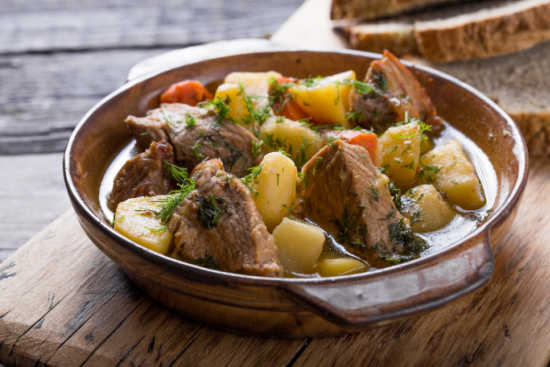During off-grid emergencies, it is important to pay attention to your use of stored fuels. After all, once your fuel stores are used up, they are gone. This is one of the reasons we stress having different types of fuel stored. As well, learning different ways to prepare food can minimize your fuel usage not only during emergencies but also during the hot summer months when you are trying to maintain a certain temperature in the home.
This little-known cooking hack will slow cook your meal and help maintain indoor temperatures while reducing the amount of fuel needed. Retained heat or thermal cooking can help keep your home cooler because you only need 10-15 minutes of stove time to have a slow-cooked meal! A perfect example of thermal cooking is, if you are making rice, once the water and rice are in the pot boiling, you can actually turn the burner off and allow the rice to cook on its own. Utilizing this cooking method also takes the stress of cooking and standing over a stove waiting for a meal to be finished. You can also walk away, knowing your dinner is cooking without electricity, and occupy yourself otherwise. This would be a great addition to a camping trip and by the time you come back from a long hike, dinner is ready to be served!
Thermal Cooking 101
So what is a thermal cooker? A thermal cooker is a cooking appliance that slow cooks like a crock pot but without requiring constant electricity. Similar to a thermos, it uses vacuum insulation to trap heat from the inner pot of the thermal cooker and then completes the cooking process without any gas or electricity. Thermal cooking allows the full release of flavors by slow cooking with trapped heat in an insulated cooker. This also prevents ingredients from burning and ensures meat and vegetables retain their shape and color.
Thermal cooking dates back to the medieval period in Europe. In the past, thermal cooking was made possible by heating a pot of food over a fire before placing the pot into another larger pot or hole which is insulated with hay, moss, and dry leaves and then covered.
Let’s Make Sense of Thermal Cooking Cookbook‘s YouTube channel offers some great videos for those who are interested or just getting started with thermal cooking.
Here is another video with some great basic tips on how to use a thermal cooker:
How A Thermal Cooker Works
It is actually a very simple process. Ingredients are first brought to a full boil before placing the inner pot into the outer container of a thermal cooker. Once the lid is put on for both the inner and outer pots, residual heat inside will allow all the ingredients to continue cooking slowly on their own. A thermal cooker works by trapping heat inside the pot so the food continues cooking without an external heat source.
There are many different devices on the market that use thermal heat to prepare foods. One popular product that many preparedness-minded folks love is the Wonder Box. It’s a similar concept, but slightly different.
A Few Tips
From what has been learned so far by Souper Diaries, the basic techniques used to cook successfully in a thermal cooker include:
1. Fuller pot = More Efficient Cooking
The fuller the pot, the less amount of air is present in the inner pot so the temperature can be retained for a longer time. However, that does not mean filling the inner pot to the brim. Check with the manufacturer’s guidelines. Some thermal cooker models recommend not to exceed 80% of the inner pot.
2. Thaw Frozen Food
If you are using frozen ingredients, thaw first before cooking for food safety purposes. The food has to be completely hot before it is transferred into the outer container.
3. Full Boil Before Transition
Bring all ingredients to a rapid boil before transferring the inner pot to the outer container to slow cook.
4. Speed
The transition from the stove to the thermal cooker has to be quick to minimize heat loss.
5. Avoid opening the lid
Don’t open the lid unnecessarily before the cooking is finished to prevent rapid heat loss.
Once you purchase a thermal cooker, remember to take care of it in case it becomes necessary to use it during an emergency of SHTF scenario. Not all parts are dishwasher safe, so you will need to learn about the model of thermal cooker you have purchased. Most thermal cookers will cost anywhere from $60-$80.
The benefits of thermal cooking are obvious! Try it today and see if it works for you!
This article was originally published at Ready Nutrition™ on July 7th, 2022







